Entrance of the Whales
Today we made a flight by helo along the fast ice edge and into the ice channel being made by the Oden, a Swedish icebreaker. Our purpose was to find out how many whales are in the vicinity. We found in previous years that when lots of whales arrive in the penguins’ foraging area, then the penguins’ feeding trips get longer and they switch from krill to fish. Therefore, it was clear that the whales and penguins were competing for food. Both the penguins and the whales feed along the fast ice edge, because as it breaks out, schools of fish and krill, which ‘hide’ way under the ice beyond these predators’ breath-holding range, become exposed to predation.
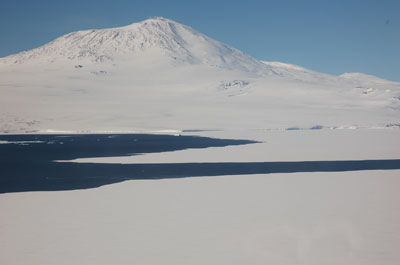
The open water end of the ice channel. Cape Royds is just out of the picture to the left.
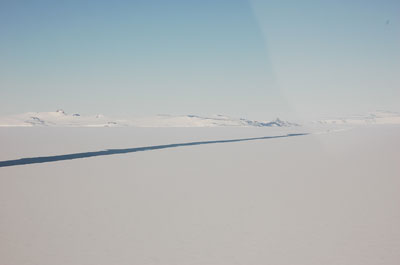
The ice end of the ice channel, cutting through the fast ice that covers the south end of McMurdo Sound. McMurdo Station is located at the (dark) end of the peninsula running from left to right. White Island is the land mass way in the distance to the right.
Keeping track of the whales was easy at Cape Royds in 2001-2005, because the fast ice edge never went south of Royds. Thus, the whales — both minke whales, which eat krill and fish, and ‘ecotype C’ killer whales, which eat fish — were easy to keep track of just by sitting at a high vantage point with binoculars and spotting scope. Last season, though, the fast ice edge eroded south to the point that we no longer could see it; it was open water from Royds to the ice, several kilometers to the south. So, the whales were beyond view.
Last season, 2006-07, we noticed a dramatic exodus of adults from Royds on the 15th of January (see figure below). My suspicion was that a bunch of whales had arrived. So, this year we’ve been making helo flights along the ice edge to do a whale census about once a week. On 4 January, we saw just 6 minke whales (MW) and 6 killer whales (KW), and during that period the penguins were making short foraging trips. Lots of adults hung around in the colony. When we made the flight today, we encountered an astounding 73 minke whales and 32 killer whales in the same areas as the 4th Jan flight. On this day, too, there was a mass exodus of adults. The helo pilot reported that in the previous few days he’d seen just a few whales present.
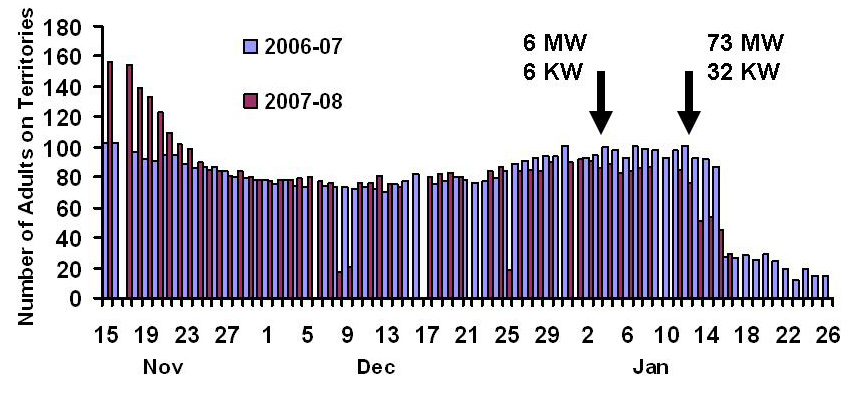
Note the rapid decline of adults in the colony upon the arrival of the whales. (MW = Minke whales, KW = killer whales.)
It seems fairly clear, then, that the whales are causing the penguins to work harder. Why so many are present in McMurdo Sound this season, we don’t know.
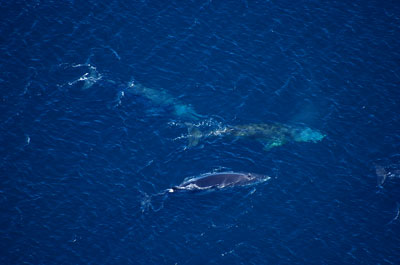
Four minke whales in the ice channel
When both parents of chicks leave the colony to forage, the chicks gather in groups, called ‘creches’. The adults who remain keep the skuas at bay. In years previous to 2006, Royds parents never made long foraging trips and, thus, many hung around. Chicks never made crèches. This season, though, there are lots of crèches. However, in spite of this, the chicks’ growth rate is actually a bit higher than last season; and last seasons’ rate was typically high, compared to what we find at other colonies in the region. Thus, by having the chicks form crèches, allowing both parents to forage simultaneously, the Royds penguins are keeping up with the whales. You see, they’ve been working this out for millennia.
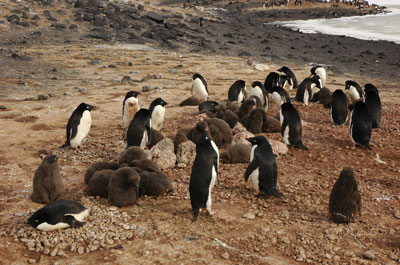
Chicks in crèches at Cape Royds, January 2008



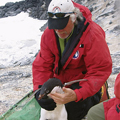

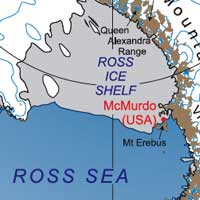





I like penguins! I like the way the adult penguins look better than the babies. Thank-you for filming this and showing us what it is like there. I really like the mommy penguins
I’m glad you’re enjoying the pictures. At our other website, penguinscience.com, you can follow specific pairs of penguin ‘families’ (the mommy penguin, daddy penguin, and baby penguin) with our Nest Check program. You’ll be able to track which parent sat on the egg which day, and how many chicks hatched (1 or 2.) Just go to: http://www.penguinscience.com/education/royds_nestcheck.php
Don’t forget to come back to this dispatch site for more entries and penguin pictures.
I just stumbled by accident on this website! It is wonderful!! I am learning so much! Thanks for sharing your work and adventures!!!
OMG!!! those picture are so freaken awesome i love the one of the whales!!! CUTE!!!! the ones that have the little penguins is awesome too!!!!well ttyl!!! bye!!!